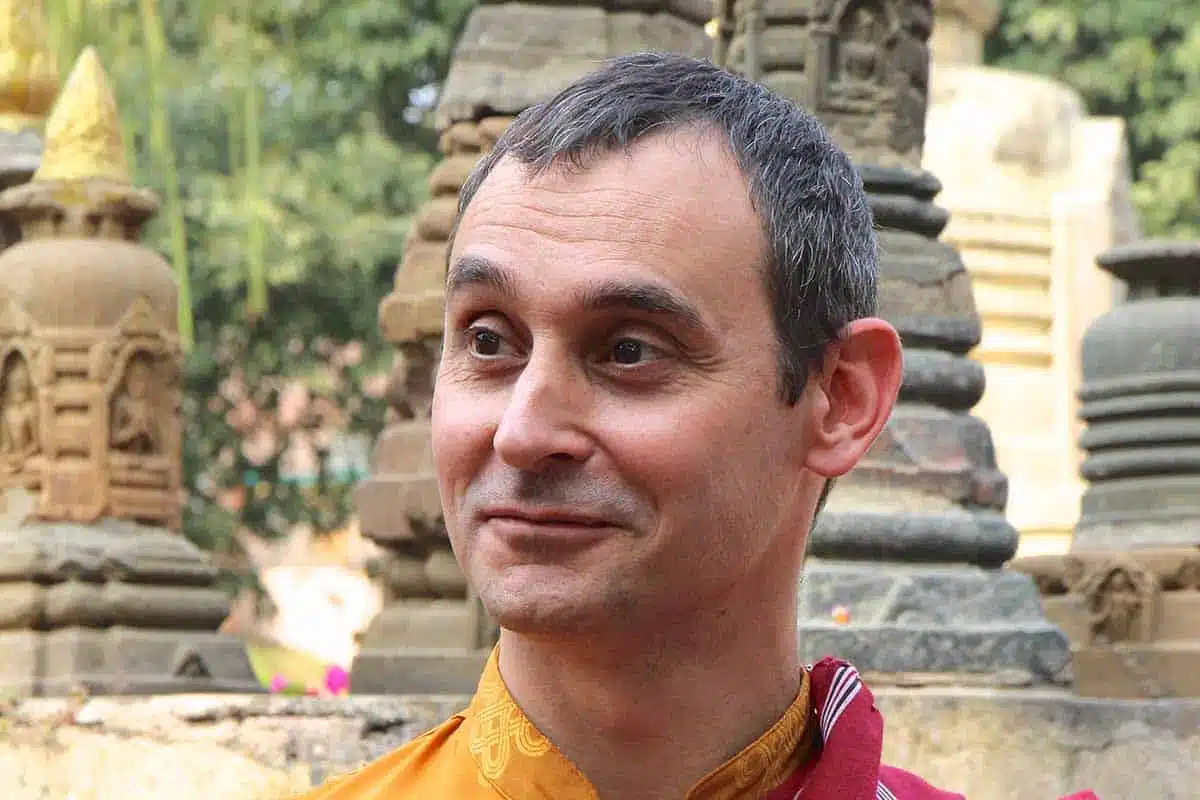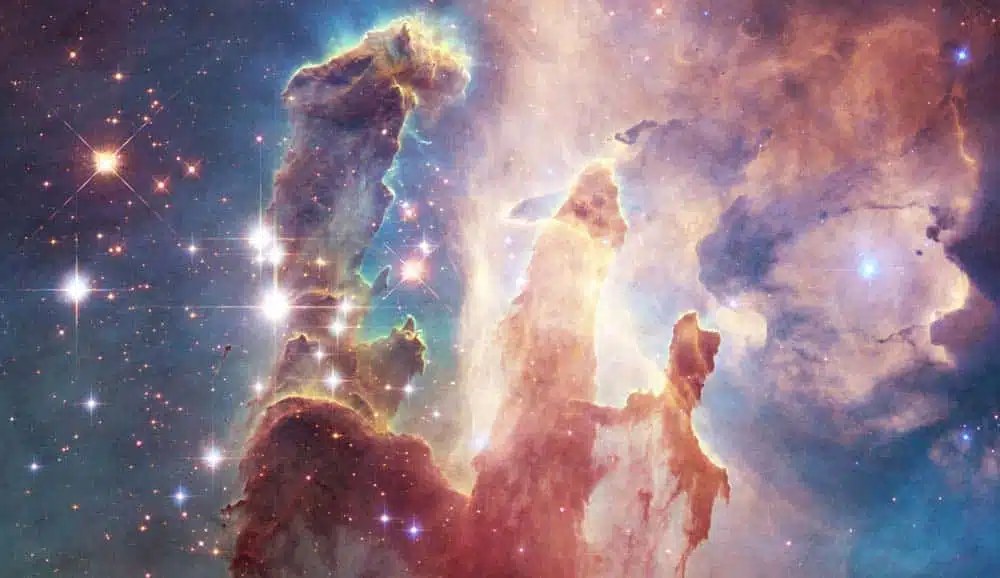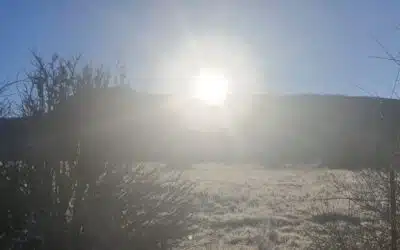The Origin of the World

Written By Mila Khyentse
Blog | Mind and Dzogchen | The Dzogchen basics
In this article, “The Origin of the World”, Mila Khyentse talks about the origin of reality, the universe… according to Dzogchen.
The Origin of the World 1: the nature of manifestation
For most Asian traditions, time is made up of repeating cycles, reproducing the same dance according to the manifestation and destruction of universes: they appear, then disappear; appear-disappear… It is a perpetual movement between the Big Bang and the Big Crunch.
“For Dzogchen, everything that manifests to us – whether it feels like it is outside (other beings, the earth, the sky, space, the universe…) or inside (thoughts, sensations, emotions…) – can only be within our own mind.”
We also like to talk about multiverses with several dimensions rather than a single universe. This dance of the creation and disappearance of multiple universes is also at the heart of the Dzogchen perspective on the manifestation of reality.
For the Dzogchen tradition, everything begins in the nature of mind and everything ends there, i.e., nothing really begins and nothing really ends either, since it never really began. However, even if it does not really begin, everything originates in the primordial purity of the mind, the source of the manifestation of phenomena. Phenomena are then the spontaneous presence of that primordial source. How do they manifest? It is said that first (not “first” but “at the base”!) there is the radiance of the Base (of the mind), which is a bright luminous clarity that refracts in the empty space and then “inhabits” it as five fundamental luminosities. These five luminosities represent the primordial qualities of the space of which they are the spontaneous emergence. It is important to understand that in Dzogchen thought there is no such thing as something giving rise to something else: the five luminosities are the natural, intrinsic radiance of the basic emptiness of our own mind.
Thus, the multiverse cannot “exist” outside of our mind as an object external to it. We are here, at the level of primordial space, in a space outside of time, in a time outside of space, where the directions are qualities, fundamental “wisdoms”, and the phenomena are potentials.
Beyond time and space, in the origin of mind, manifestations (phenomena) do not have the physical space to aggregate and do not have the time to develop, to evolve, to transform. At this level of perception of reality there is not even the idea or sensation of an outside and an inside, of a self and another, of a multiverse in which we find ourselves, of manifestations and Base. So it is the space of the five wisdoms, the first emergences – but not in time, as an origin – empty potentials of all manifestations.
Then the three worlds, the four times and the ten directions manifest from the space of the five wisdoms.

Let us take a passage from the Guhyagarbha Tantra [1], one of the oldest redactions from the 8th century [2], to illuminate this origin of reality for the Dzogchen view:
The teaching of the primordial Great Perfection (Dzogchen), spontaneously present
This sublime realm of experience of supreme primordial knowledge is given as personal instruction to those with intelligence.
I pay homage to the primordial teaching that has thus appeared.
Without center or periphery, without being one or many,
The Maṇḍala which transcends thought and cannot be expressed,
Illuminates the mind of primordial evidence (Rigpa).
I pay homage to the great Vajrasattva.
In the three illusory worlds that are like the boundless sky, millions of emanations are present everywhere.
I pay homage to Māyājāla. The ten directions and four times are secretly of the nature of the Great Perfection,
Which is itself the ainsity of the ultimate essence,
Primordial and spontaneously present, inseparable cause and effect.
I pay homage to the Supreme Guhyagarbha.
In this passage, one of the oldest in Dzogchen, it is confirmed that the basis of reality is the mind of primordial evidence, our own nature of Great Perfection, beyond any conceptual extremes of thought or perception. We are then told that within the three worlds (the three main dimensions of the multiverse: form, non-form and desire), the entire reality of the phenomena that manifest is present without limit, in an illusory way. This is the net of illusion of the world, the universe (Māyājāla). This illusory reality of phenomena is actually a multiple emanation of the primordial nature.
Thus, with the manifestation of time (the four times) and space (the ten directions), the five luminosities of the Base – the five wisdoms – are the five elements, the very basis of the manifestation of the whole multiverse and all dimensions of phenomena. These five elements are, first of all, the space from which all the others spring: air, water, fire and earth. Their dance and exchange give birth, through mixing, through aggregation, to the multiple phenomena that make up our reality: the sensations (pleasant, unpleasant and neutral), the thoughts, the emotions, the self, the perceptions associated with the senses, the stars, the planets, the earth, the mountains, the rivers, the clouds, the trees, the flowers, the plants, the animals, the people and the barbecue.
For Dzogchen, everything that manifests to us – whether it feels like it is outside (other beings, the earth, the sky, space, the universe…) or inside (thoughts, sensations, emotions…) – can only be within our own mind. The infinitely large or the infinitely small are simple manifestations of the primordial nature of our mind.
[1] The Guhyagarbha Tantra (The Tantra of the Secret Quintessence; Tibetan: rgyud gsang ba’i snying po), is the root teaching of the Mahayoga Tantra cycle and the most fundamental text for the Nyingmapas regarding the view of the Tantras and even of Dzogchen. Indeed, chapter 13 of the Guhyagarbha, “The Garland of Views”, sets out the teachings of the Tantras in the perspective of their completion through the practice of the Great Perfection. For more information: https://www.rigpawiki.org/index.php?title=Guhyagarbha_Tantra BACK
[2] Dunhuang manuscripts, Pelliot Tibétain 322B. You can find another version by Sam van Schaick here: https://earlytibet.com/2008/01/24/early-dzogchen-iii/ BACK
More Posts
The ground (gzhi)
This article is the first in a new category designed to provide a better understanding of the essential words and concepts of Dzogchen.
The Call of the Lineage
In “The Call of the Lineage” Mila Khyentse talks about the Dzogchen lineage of his master Alags Chörten, called “the Diebu Lineage”.
The Supplication that Fulfills All Wishes
In “The Supplication that Fulfills All Wishes”, Mila Khyentse gives us a prayer from his Master for difficult times and conditions.



